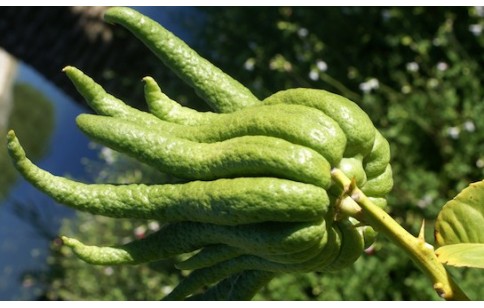- Code : #0581 S 20 mg
- Formula : C₁₁H₁₀O₄
- CAS : 487-06-9
Citrus medica
Citrus medica, “Citron” in English and “Cédratier” in French, belongs to the Sapindales botanical family. It is a shrub or small tree that reaches a height of 2 to 5 m, native to North-Eastern India and possibly Myanmar. Mostly cultivated in the Persian Gulf, it reached the Mediterranean basin and was cited in the Antiquity by Theophrastus and Pliny the Elder.
Itsdozen of varieties have many culinary uses around the world, and its essential oil is still used in perfumery.
As a traditional medicine, whether Ayurvedic, Chinese or Mediterranean, different parts of the plant were and are still used for several different ailments: as a poison antidote, an antibiotic, to treat pulmonary and intestinal trouble, scurvy and others.
Its analgesic, anthelmintic and antiulcer activities have been validated by modern research.
The main components of its essential oil are citral, limonene, isolimonene (peel) and erucylamide (leaves).

- Code : #0586 S 10 mg
- Formula : C₁₁H₁₀O₄
- CAS : 120-08-1
- Code : #1109 S 20 mg
- Formula : C₂₈H₃₂O₁₅
- CAS : 520-27-4
- Code : #1116 S 20 mg
- Formula : C₂₈H₃₄O₁₅
- CAS : 520-26-3
- Code : #5082 S 100 mg
- Formula : C₁₀H₁₆
- CAS : 5989-27-5
- Code : #5062 SA 100 mg
- Formula : C₁₀H₁₆
- CAS : 3387-41-5
- Code : #0558 S 20 mg
- Formula : C₁₀H₈O₄
- CAS : 92-61-5
- Code : #0542 S 20 mg
- Formula : C₉H₆O₃
- CAS : 93-35-6









